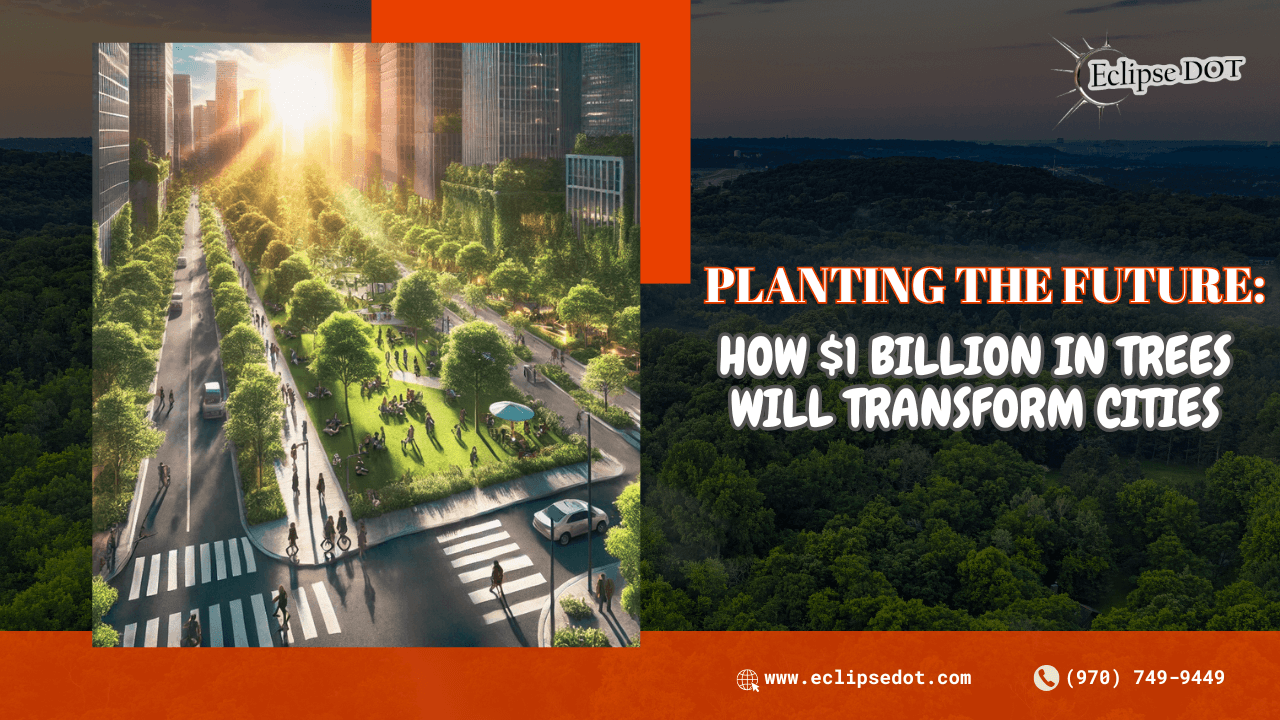Trees. They’re not just for treehouses or hanging holiday lights—they’re about to be the MVPs of our cities. The U.S. Department of Agriculture (USDA) is dropping a cool $1.13 billion to plant and maintain trees in neighborhoods across the country. And no, this isn’t just a “plant it and forget it” deal. This initiative is about changing the game—making cities cooler (literally), healthier, and just a lot more livable.
A Big Deal for 385 Communities
USDA Secretary Tom Vilsack didn’t hold back when announcing this green goldmine in Cedar Rapids, Iowa. The funding covers 385 projects across all 50 states, plus Washington, D.C., Puerto Rico, the Virgin Islands, and several tribal nations. And the focus? Communities that have been sweating it out with barely a tree in sight.
“We believe we can create more resilient communities in terms of the impacts of climate,” Vilsack said. Translation: Trees are coming to save the day!
This initiative isn’t just about slapping a few saplings in a park. It’s a full-blown mission to fight urban heat, improve health, and make sure no one gets left out of the nature game.
Why Trees? They’re the Swiss Army Knives of Nature
You might be thinking, “Trees? Really?” Yes, really. Trees aren’t just pretty to look at—they’re climate warriors, public health champions, and the ultimate multitaskers.
- They Cool Cities Down: Urban heat islands—the fancy name for cities that feel like ovens—don’t stand a chance against a strong tree canopy. More trees mean lower temps, shaded streets, and fewer people feeling like they’re melting during summer.
- They Clean the Air: Trees gobble up carbon dioxide and other pollutants, pumping out fresh oxygen like little green factories.
- They Keep Us Healthy: Studies show that living near green spaces reduces stress, improves mental health, and lowers the risk of respiratory issues. Basically, trees = chill vibes.
And the best part? This initiative is bringing all these benefits to communities that need them the most.
Cedar Rapids: A Green Comeback
Cedar Rapids, Iowa, knows all too well how much trees matter. Back in 2020, a derecho—a windstorm so intense it probably gave hurricanes a complex—destroyed thousands of the city’s trees. It was a brutal blow, leaving neighborhoods exposed to the sun and, frankly, a little less charming.
Now, with $6 million in USDA funding, Cedar Rapids is on a mission to bring its trees back. Think of it as the ultimate tree comeback story—a Rocky Balboa moment for urban forestry.
Big Cities, Small Towns, and Everything In Between
This initiative isn’t just for the big guys like New York City, Houston, and Los Angeles (though they’re getting their share). Small towns like Tarpon Springs, Florida, and Hutchinson, Kansas, are also getting in on the action.
Whether you’re dodging taxis in Times Square or sipping sweet tea on a Kansas porch, you’ll see the impact of this program. It’s proof that trees aren’t just for rural forests—they’re for everyone.
Justice in the Shade
At its core, this $1 billion initiative is about leveling the playing field. Brenda Mallory, Chair of the White House Council on Environmental Quality, put it perfectly:
“Everyone should have access to nature,” Mallory said.
For too long, underserved communities have faced the brunt of climate challenges—heat waves, polluted air, and a lack of green spaces. This program is flipping the script, making sure these neighborhoods get the shade, fresh air, and mental health boost they deserve.
More Than Planting: Sustaining the Urban Forest
This isn’t just a “plant it and peace out” project. The USDA’s Forest Service is throwing in another $250 million to ensure these trees thrive long after the shovels are put away. The goal is to create sustainable urban forests that grow with the community, providing benefits for decades.
Funded by the Inflation Reduction Act
This whole operation is powered by the Inflation Reduction Act, which is making waves not just in the economy but also in the environment. It’s not just about inflation—it’s about building a sustainable future.
Trees planted through this initiative will do more than provide shade. They’ll help reduce energy costs, absorb carbon emissions, and create jobs. Yes, even trees are job creators now.
Why This Matters
Here’s the deal: A single mature tree can absorb up to 48 pounds of carbon dioxide every year and provide enough oxygen for two people. Multiply that by the millions of trees this initiative will plant, and you’re looking at a massive environmental win.
But it’s not just about the stats. It’s about the shade over a playground where kids can run around without overheating. It’s about the cool breeze under a tree-lined sidewalk on a summer day. It’s about turning “concrete jungles” into actual urban jungles.
The Future Looks Green
This $1 billion initiative isn’t just about planting trees—it’s about planting the seeds for a better future. A future where cities are cooler, cleaner, and more connected to nature. A future where everyone, no matter where they live, has a shady spot to escape the heat and a green space to breathe in the fresh air.
So next time you see a tree being planted in your neighborhood, give it a little nod of appreciation. It’s not just a tree—it’s a symbol of resilience, hope, and a greener tomorrow. 🌳
Gain exclusive access to our CDL & DOT Compliance articles with a trial at DOTDocs.com. And don’t forget to claim your FREE micro audit at THE ECLIPSE DOT MICRO AUDIT. Ready for seamless operations? Discover the difference today!
Sources:

